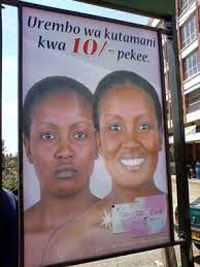Platform for discussion008
How do we productively map the historical and contemporary relationships that exist between North Africa, the Middle East and the Global South?
In a recent video work, Mouthfeel (2014) and a related lecture-performance titled Playlist (2014), I focused on symmetries between forms of aspirational consumption in the Global South. Just as a great deal of production has been outsourced, so too has consumption and though most discussions around globalization examine it as a mode of production, it is as much a mode of consumption and a mode of desire. My recent work has examined the reshaping of people's minds, habits, and habitats by nascent forms of aspirational consumption, be it of luxury goods or everyday consumer items. Take for example Fair & Lovely – the same best-selling skin lightening product on sale in both South Africa and India. In my lecture-performance I point out that in South Asia light skin is a positive trait that precedes British colonialism. The South Asian obsession with light skin colour has its roots in millennia-old traditions and indigenous histories, and was deeply inscribed in the culture way before any European explorers ever set foot in the region. In South Africa, to the best of my knowledge, this is a trait that is inextricably bound up with the advent of European colonization and domination. Thus, these two pictures below are as much about historical differences as they are about present day homogenizing realities. In one picture we witness the ability of global capital to prey upon indigenous traditions (or rather, indigenous inequalities) and in the other, the well known but still damning nexus between colonialism and globalization.
In 2009 I started my ongoing photo work Independence Day 1934-1975 – actually I began thinking about it in 2008 but who's counting? This work focuses on photos of the first independence day of various Asian, African, and Middle Eastern countries. A key concept is that the photos come from the countries themselves. Thus I now have photos from the public archives of around 25 different countries. I am interested in how despite geographical distances, there are parallels between the decolonial moment in Ghana and Malaysia (both independent in 1957 within a few months of each other) or productive symmetries between Mozambique, Algeria, and Indonesia. Independence Day 1934-1975 emerged from such a quest to create a typology of rituals, gestures, and ceremonies across disparate regions – to look at symmetries (and contrasts) between different regions and not just within a single region or nation.
The most prevalent form of mapping, it seems to me, has been a regional one – Africa, Asia, Middle East (or cordoning off the continents into even smaller units such as South Asia, East Africa, Central America and so on) and certainly there are important affinities to be mined from this perspective – but as an artist my personal interest has always been to look beyond immediate geographical proximity and examine other forms of proximities. For example, when speaking recently to a Kenyan artist we were discussing the connections between South Asia and Kenya. Partly it is due to the shared history of British colonialism and specifically the British colonial policy of bringing in indentured labourers from South Asia to British colonies in Africa. But more significantly, due to long running trade ties along the Indian Ocean and Arabian Sea, there are centuries of cultural exchange between South Asia, the Middle East, and East Africa – exchanges that have left indelible ties on the culture, language, food and religions of the regions on the rim of the Arabian Sea. Thus, I want to ask the question, what would it mean to read the globe not according to land but water – covering 70 per cent of the planet, fluid rather than fixed, transient rather than solid? The Arabian Sea has played a role in South Asia, the Persian Gulf and East Africa that is similar to the Mediterranean Sea in its region. Historically the Non-Aligned Movement (and nowadays, the World Social Forum) are forms of organization that have attempted to bring history as much as geography into focus and are a source of hope for the future. However, I also want to strike a note of caution in that recognizing shared histories from the past or shared interests in the present does not mean suppressing historical inequalities (the Arabian sea was also a huge conduit for the Arab slave trade) and emerging intra-regional neo-colonialisms (witness the purchase of huge tracts of arable land in east Africa at cut rate prices by Indian agribusiness giants for example). Thus, South-South forms of cooperation and co-optation are neither inherently emancipatory nor inherently reactionary but rather are what we chose to make them.
What is a platform?
A platform is a space for speaking in public. It is an opportunity to express ideas and thoughts. It also suggests the formal declaration of a stance or position on any given subject.
Unique to Ibraaz is a 'platform', a question put to writers, thinkers and artists about an issue relevant to the MENA region. This platform is sent to respondents both within and beyond the MENA region and contributions will be archived every 12 months.


